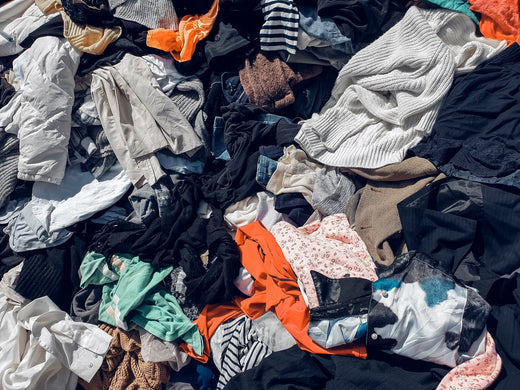
How Upcycled Textiles Reduce Waste and Pollution
The fashion industry is one of the most wasteful and polluting industries on the planet. Every year, billions of tons of textiles are discarded, while producing new fabrics consumes massive amounts of resources. Upcycling is emerging as a powerful solution, offering a way to transform waste into valuable, eco-friendly products. In this article, we’ll explore how upcycled textiles reduce waste and pollution and why they’re a game-changer for sustainable fashion.
What Are Upcycled Textiles?
Upcycled textiles are materials that have been repurposed from discarded fabrics to create new products. Unlike recycling, which often involves breaking down materials into raw components, upcycling retains the integrity of the original fabric, reducing the need for additional energy and resources.
For example, at CLOTH’EL, we use luxury hotel textiles to craft unique garments, giving these materials a second life while keeping them out of landfills.
1. Diverts Waste from Landfills
Every year, approximately 92 million tons of textile waste end up in landfills, where it can take decades—or even centuries—to decompose. Synthetic fibers like polyester release harmful greenhouse gases as they break down, further contributing to climate change.
Upcycling reduces this waste by reclaiming fabrics that would otherwise be discarded. By transforming old textiles into new, high-quality garments, upcycled fashion ensures that valuable materials stay in circulation instead of rotting in landfills.
2. Reduces the Need for Virgin Resources
Producing new fabrics requires significant resources:
- Water: It takes 2,700 liters of water to make one cotton T-shirt.
- Energy: Manufacturing synthetic fibers like polyester consumes large amounts of fossil fuels.
- Land: Growing cotton and other materials often competes with food production, putting pressure on ecosystems.
By using existing textiles, upcycling bypasses these demands, conserving water, energy, and other natural resources. This helps reduce the overall environmental footprint of the fashion industry.
3. Lowers Pollution from Textile Production
Traditional fabric production generates pollution at nearly every stage, from dyeing processes that contaminate waterways to the chemical treatments required for synthetic fibers. For example:
- Dyeing and finishing: Responsible for 20% of global water pollution.
- Microplastic shedding: Synthetic fabrics release microplastics into the environment during washing, polluting oceans and harming marine life.
Upcycled textiles avoid many of these harmful processes. Since the materials are repurposed rather than created from scratch, the need for additional chemicals, dyes, and treatments is drastically reduced.
4. Supports Circular Fashion
Upcycling is a cornerstone of the circular fashion movement, which focuses on keeping materials in use for as long as possible. This approach:
- Reduces waste by extending the life cycle of fabrics.
- Encourages innovation in design, as brands and creators find new ways to repurpose materials.
- Helps shift consumer behavior toward more sustainable choices.
At CLOTH’EL, our collections tell a story of renewal. By giving luxury hotel textiles a second life, we’re not just reducing waste—we’re reimagining what fashion can be.
5. Promotes Consumer Awareness and Responsibility
Upcycled textiles offer a tangible way for consumers to engage in sustainable practices. When you buy upcycled clothing, you:
- Make a conscious choice to reduce waste and pollution.
- Support brands that prioritize environmental and ethical responsibility.
- Help shift demand away from fast fashion and toward more sustainable alternatives.
Every upcycled garment serves as a reminder of the impact our choices can have on the planet.
CLOTH’EL: Leading the Way in Upcycled Fashion
At CLOTH’EL, we’re redefining fashion by turning discarded hotel textiles into timeless, high-quality garments. Each piece in our collection is a testament to the power of upcycling—proof that waste can become something extraordinary.
By choosing CLOTH’EL, you’re not just reducing your environmental footprint—you’re making a statement about the future of fashion.
Conclusion: Waste Less, Pollute Less, Create More
Upcycled textiles are a revolutionary solution to the waste and pollution problems plaguing the fashion industry. By diverting waste from landfills, conserving resources, and promoting circular fashion, upcycling offers a sustainable path forward.
Are you ready to make a difference? Explore CLOTH’EL’S upcycled collections today and join the movement to transform waste into beauty.
